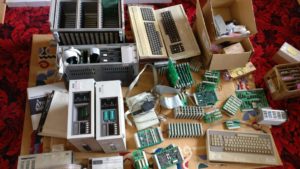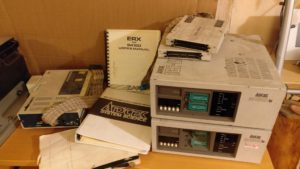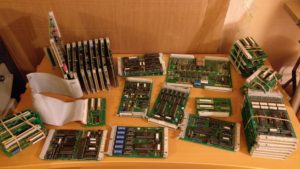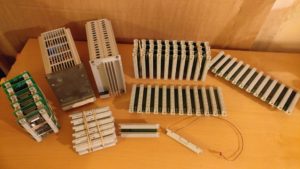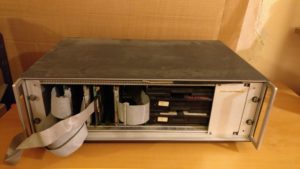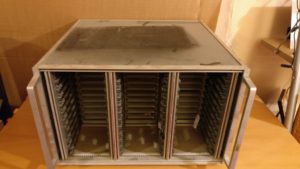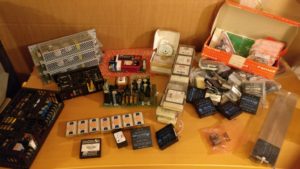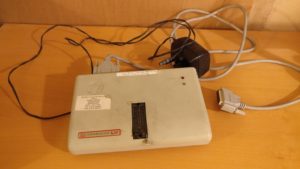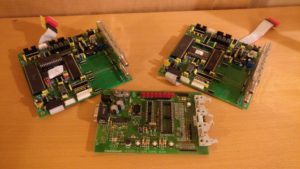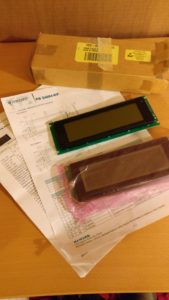So, once again Retro Challenge is upon us, and, yes, the timing is offset , but an April challenge should mean that more people are able to participate.
To try and stay ahead of the curve this time, I thought I’d get in early and give my excuses for why I failed to complete the challenge this time around. I know most people leave this part until the very end, so hopefully I can impress the judges with my efficiency!
The very first weekend in April was the UK Maker Faire in Newcastle (which was awesome, thank you for asking), so that took 3 days out of April for me. Then at Easter the Edinburgh Mini Maker Faire will also be robbing me of 3 days. And, finally, Vintage Computer Festival Europe is on from 29th April to 1st May. So, with travel and prep for these events, I feel like I’ll be left with about 4.5 days in which to complete the challenge. Lets see how that works out…
So, before I get in to the Retro Challenge I’ve set myself, here’s a bit of history to bring you all up to date. A few weeks ago I got an email from Tom de Havas saying that there was a bunch of Z80 based stuff going spare at a company that no longer needs it, and would I be interested? There really is only one answer to that, which resulted in a 350 mile road trip and a van full of old kit. Then came the more difficult question that I asked myself; what the hell is all of this stuff and what am I going to do with it? With the realization that Retro Challenge was approaching I knew that I had a challenge on my hands!
The primary goal I’ve set myself is to identify and catalog just what I’ve got here. Some of it is vaguely obvious, but I’d like to get in to details about exactly what it is/was/does. A lot of it is new old stock, so it probably will work, but I’d like to know for sure. Other items are certainly used, but, again, I’d like to know if it still works. To test things, I’m really going to have to know what they are, right down to the pin out of some of the connectors, so that will all need documenting too. And then there’s the documentation, which 5 minutes on Google makes me think these manuals aren’t online anywhere, so there’s a scanning/archiving challenge here too.
Yesterday I took a very rough inventory, which is the first step towards knowing what I’ll be doing for the rest of the month. Here’s some photos and my first guesses about what I’ve got;
There are 3 Z80 In Circuit Emulators. Two from Adtek and one from Zax, all with manuals. It looks like they will either run from a CP/M machine (although no software is included) or from a dumb terminal.
There is a whole load of Euro Cards. Some of these are Z80 single board computers, some are communication cards and some are I/O cards. I believe they are propriety, but hopefully they’ll have standard bus pinouts so I stand a chance of working out what they do.
Along with the cards is a lot of backplanes. Mainly passive 2, 10 or 12 slot boards, but also some active (?) 2 slot boards and a coupld of rack power supplies.
This is a CP/M machine, with a few cards and a couple of 5 1/4″ drives with discs (one is labelled CP/M). It looks pretty complete, although very dirty. Certainly needs a thorough inspection before powering it up. 25 pin D socket labelled video might prove challenging to get anything out of it.
Large rack with 3 backplanes and a lot of power supply stuff at the back. The backplanes look prototype-ish, but it might be a good case to use the new backplanes as shown above.
4 parallel keyboards. Very very dusty. A couple with hex input number pads. At least one of these should work with the CP/M machine shown above.
Lots of power supplies and power regulators, including a PSU kit from Farnell. All new.
More power supplies and enclosures. Also new. Looks really high quality (expensive)
Parallel port EPROM programmer.
PIC development board and a couple of newish looking communication boards? One has Tx on the EPROM, the other has RX.
A couple of new 240 x 64 LCD displays
